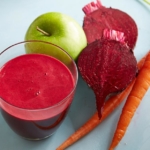Do you suspect you have food intolerance, but haven’t got a clue as to how to work it out?
The thing with food intolerance is that it’s often a delayed reaction, making it really hard to pinpoint the culprit. It’s also pretty rare to react to just one food. Often you are reacting to a particular food chemical in a number of foods, its onlythe last food that tipped you over the edge.
The symptoms of food intolerance are also many and varied. In fact any symptom anywhere in the body can result from food intolerance, this is because any food that irritates the gut, is probably not digested properly, it causes an inflammatory response, and if your gut barrier is compromised (AKA leaky gut) inflammatory molecules can escape, travel through the bloodstream and cause problems in any area of weakness or susceptibility eg. the joints, skin or brain. Brain symptoms can include headache, migraine, fogginess, poor memory, anxiety, depression, and lack of focus/concentration.
That’s right, symptoms are not necessarily contained to the gut, you might not even have gut symptoms, although often you will. The symptoms of irritable bowel syndrome (IBS) such as bloating, pain, reflux, heartburn, distension, wind, diarrheoa or constipation are typical symptoms.
Let’s take an example of a food chemical; gluten.
1% of the population have an actual allergy to gluten, this is called Coeliac disease. Sufferers can’t tolerate any gluten at all and the symptoms either occur immediately or within about half an hour, and can include pain, diarrhoea, nausea and vomiting, hives and/or headache. This is an IgE mediated food sensitivity. It has been estimated that up to 35% of the population are intolerant to gluten. We have a name for this non-coeliac gluten sensitivity (NCGS).
Gluten can be found in bread, wheat, flour, rye, barley and in any grain- based product produced in the same factory as gluten grains, which in Australia includes most oats. Some professionals would say NCGS is not a real thing, but there is plenty of evidence to suggest it is.
Did you know that humans can not digest gluten? Thankfully for most people it passes through the system without too much bother. However that can change anytime. You can lose your “tolerance”. This can happen when the gut wall is damaged by anything from other food intolerances, chemicals and toxins coming in on non-organic food, bacteria, fungi and other infections, even stress.
Stress can cause inflammation and it can disturb the gut bacteria that normally help with digestion and protect the gut wall. Stress is a major trigger of IBS.
Every time you eat gluten it causes tiny tears in the gut wall. The gut becomes momentarily leaky. This means the contents of your digestive tract are exposed to the immune system located in the GALT (gut associated lymphoid tissue) within the gut wall. Most people have the ability to repair these tears straight away, so no problem. If however your gut is compromised by an inflammatory process, by toxins including antibiotics, other medicines, and glyphosate (round up), then you may not be able to fix these little tears and the gut wall damage can get bigger. This sets up further food intolerance, and further inflammation, and suddenly you have a vicious cycle and a problem that your body needs outside help to fix.
But what if you don’t eat much gluten and you still have a problem ???
This is very common. Reducing gluten helps for a while, but it’s not the whole problem or the whole answer. For one thing you need to avoid gluten 100% for at least 3-6 months, because that’s how long gluten stays in your system.
“It’s possible to be intolerant to just about any food.”
What happens is that you eat a food that is normally fine not long after your gut becomes compromised by something, eg food poisoning, gastroenteritis, chemical or medicine exposure or stress, and this opens your gut to the immune system. The immune system then sets up antibodies to the next foods that come along. These are IgG antibodies and are responsible for food intolerance. Now every time you eat the food the antibodies mount a response. It can take 24-36 hours to feel the symptoms. By then you may have eaten several problem foods, or, it can take a while to eat enough of the food eg. dairy before your tolerance threshold is breached and you start having a reaction.
Here’s an example –
You might have milk on your cereal for breakfast, a latte for morning tea and be going along fine. But then you have some cheese at lunchtime and some cream on a cake, and boom, it’s too much, you then have overloaded your tolerance threshold and have a delayed reaction. You might think it’s the cream cake, but it’s just as much about the milk on your cereal or the latte. When it comes to dairy you might get bloating due to the lactose, or you might have an inflammatory response to the protein in the dairy, which is called casein. They are two separate issues.
How about the situation where you feel like you react to everything. You’ve cut soooo much out of your diet, but you are still not better, and you are running out of things to eat! This is not a good situation at all. I love to help these people.
You may have a broader intolerance to a quite natural food chemical such as histamine, oxalates or salicylates.

Strawberries. so delicious, and healthy, or are they? If you react to strawberries? It might be a histamine or salicylate reaction
If you have any of the following symptoms you may have histamine intolerance –
- hives
- itchy skin all over
- other rashes including eczema.
- If your child gets a red rash around their mouth after eating this is likely to be due to histamine
- puffy eyes and face
- constant sneezing and runny nose, or a cough for no reason
- nausea
- abdominal pain
- reflux and heartburn
- headache/migraine
- anxiety (this is a huge one)
- period pain
- dizziness/vertigo/low blood pressure
- trouble falling asleep
- Urinary tract irritation
- general fatigue
- intolerance to probiotics and probiotic foods like sauerkraut and kombucha
Histamine intolerance is becoming more and more common, but it can be brought under control. How easy that is depends on the cause (genetic enzyme deficiency or due to gut microbiome imbalance). Either way, a low histamine will bring relief, but you still have to fix the underlying problem. ANy elimination diet should only be short term. It’s job is to reduce the burden while you deal with and correct the root cause.
Foods high in histamine include nearly all fish, aged meat and deli meats (salami, bacon), bone broth, aged cheeses, anything pickled or fermented, most nuts, and certain fruits and vegetables, especially citrus and strawberries. Tea, coffee, chocolate and alcohol are all histamine liberators and need to be moderated as well. You don’t have to avoid these foods completely, but the more you reduce them the better you will be. Once again I stress, you need to fix the underlying problem and that comes back to the gut.
Another food intolerance that I am seeing more and more is oxalate intolerance. Oxalates are tiny crystals made by plants to protect themselves from getting eaten. It works like a natural insecticide to damage the intestinal tract of the insect causing them to die (and stop eating the plant). Unfortunately some of us humans also experience gut damage from these oxalates, and if the crystals can travel in the bloodstream they can cause pain, inflammation and dysfunction anywhere in the body. It is theorised that anyone with joint pain could have an oxalate issue. Be very suspicious if you or anyone in the family has a history of kidney stones or thyroid disease.
Other symptoms of oxalate intolerance are –
- fatigue and lack of stamina
- weak muscles or low muscle tone
- poor brain function
- diffuse gut pain that is hard to explain, but always present
- urinary tract irritation, or pain when passing urine that isn’t due to infection
- incontinence or bedwetting
- joint pain
- eye pain
- headache
- sensation of burning feet
- sandy stool (poo)
- behavioural issues in kids
- recurrent candida infection (thrush)

Healthy juices can be high in oxalate causing fatigue and pain. You are not mean to feel worse after a juice!
Foods high in oxalate include nuts, especially almonds, spinach, beetroot, carrot, celery, sesame seeds and tahini, raspberries, potato and sweet potato – all healthy foods! If you feel worse from vegetable juices this might be why!
The body also makes oxalate as a by-product of glycine production, which is an amino acid with a number of very important functions, and glyphosate (pesticides inc. round-up) are also broken down to oxalate as part of detoxing them.
Fixing an oxalate problem is multi-layered, and must be done slowly, but it can make a massive difference to energy levels, general function and wellbeing.
The last food chemical I’d like to talk about is salicylate (ie. phenols, which also includes amines) intolerance. This one is most obvious in kids.
Some of the symptoms of oxalate intolerance are,
- irritability
- hyperactivity erratic behaviour and mood
- red cheeks and red ears
- strange rashes
- tummy pain and digestive issues
- wake in middle of the night
- food colours, flavours, and additives are a problem
- get crazy after swimming in chlorine
- React to aspirin or panadol
- headaches
Salycilate intolerance can be corrected. First with a short term low phenol diet, but the real issue is to heal the gut and improve sulphation. Sulphation is a detox pathway that takes place predominantely in the liver, that may not be working properly due to genetic reasons. This can be overcome with the right (natural) treatment.
Long story short, if you have food intolerance, and you don’t want to have food intolerance, or if you don’t want it getting any worse (which is what tends to happen), then you need to fix your gut! If you heal the gut, most food intolerance will self-correct. If you have histamine, oxalate or salicylate intolerance there are further steps to take, including nutrient therapy to support various enzymes, and normalising function of the transsulfuration pathway.
Fixing the gut is not hard if you know what to do. There are some steps to take and a logical order to follow. Depending on how long you’ve had the issues and whether the original cause of leaky gut is still present, some people will need to work at it for longer than others, but there is not a food intolerance sufferer I’ve met that I couldn’t help.
If you’ve tried an elimination diet before without success, then the likely reason is that the most important part has been missed – Healing the gut!
To heal the gut we follow the 5Rs –
- Remove
- Replace
- Repopulate
- Repair
- Rebalance.
As you can see remove is only step one!
Remove refers to the right elimination diet, and removing any pathogenic microbes eg bad bacteria, yeast etc
Replace refers to boost stomach acid, adding bile support and/or digestive enzymes
Repopulate refers to balancing the gut microbiome by adding good bacteria and discouraging bad bacteria, such as the strains/species that make histamine
Repair refers to adding the specific nutrients that help re-build a strong and functional gut wall. No more leaky gut!
Rebalance refers to making lifestyle changes to lower inflammatory behaviours and improving stress tolerance, to ensure gut damage and imbalance does not reoccur
Living with food intolerance is not fun. Depending on your symptoms you might be prepared to put up with it, or perhaps you didn’t realise that your symptoms were due to food intolerance. Now you have an avenue to fix these problems. You can do food intolerance testing, or by asking the right questions, a good nutritionist can help you identify not only the foods you are reacting to, but identify the reason why. Then you are more than halfway to fixing them!










